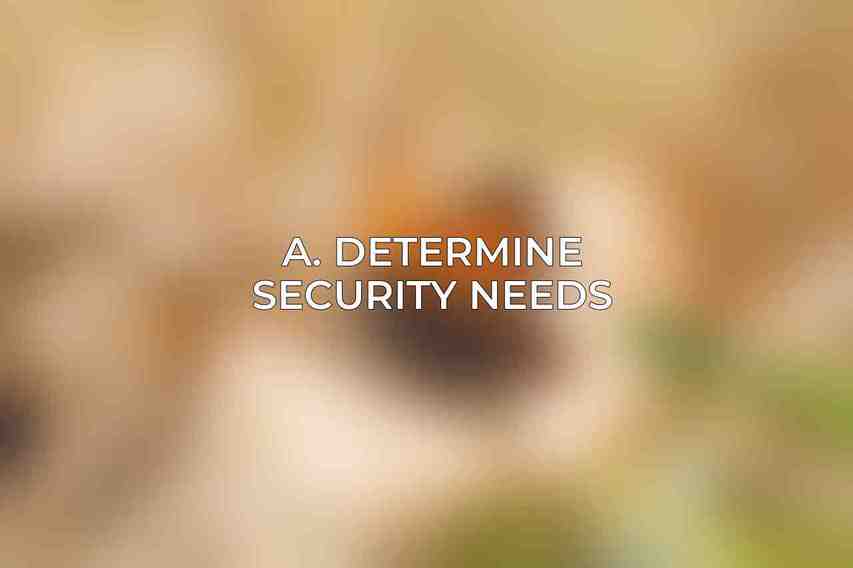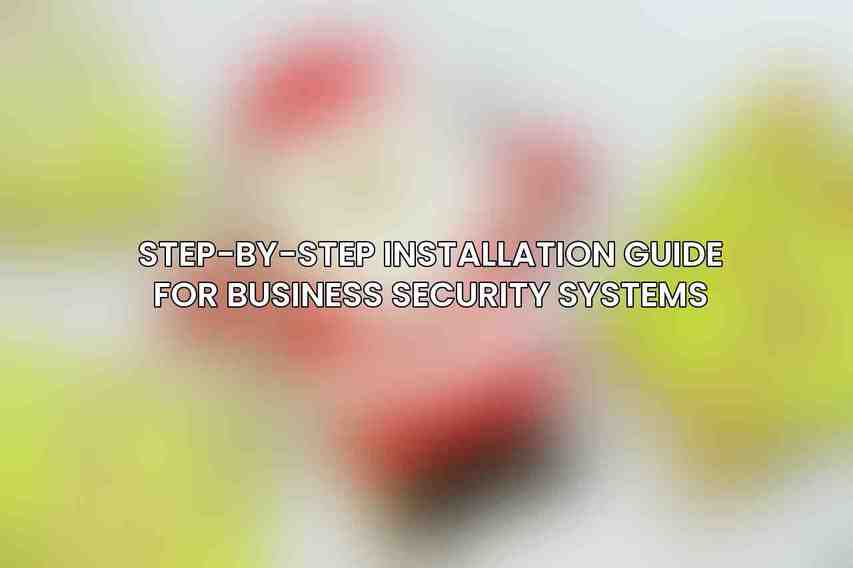When embarking on the installation of a business security system, meticulous planning is essential to ensure its effectiveness.
A. Determine Security Needs

Before selecting any components or deciding on installation locations, it is crucial to assess the specific security needs of the business. Conduct a thorough risk assessment to identify vulnerable areas and potential threats.
B. Choose System Components

Selecting the right components for your security system is a critical decision that will directly impact its performance. Components typically include:
Cameras: Decide on the type of cameras needed, such as IP, analog, or wireless, based on the surveillance requirements of the business.
Sensors: Choose the types of sensors, such as motion, glass break, or door/window sensors, that will provide the desired level of protection.
Control Panel: This central hub is essential for managing the security system and receiving alerts.
Monitoring Service: Decide whether to opt for professional monitoring services to enhance the system’s efficacy. Find more on Understanding the Cost of Business Security Systems: A Detailed Analysis
C. Select Installation Locations
Careful consideration should be given to the placement of cameras and sensors to ensure comprehensive coverage and maximum protection.
Camera Placement: Strategically position cameras to cover critical areas both indoors and outdoors. Find more on How to Maintain Your Business Security System Effectively
Sensor Placement: Install sensors at entry points and sensitive areas to detect any unauthorized access.
D. Set Budget
Establish a budget that aligns with the chosen components and installation requirements to avoid overspending.
Installation
The installation phase is where the components chosen in the planning phase are physically implemented to create a functional security system.
A. Prepare Installation Site
Before proceeding with the installation, ensure that the installation site is adequately prepared with the necessary infrastructure.
Power Supply: Ensure there are accessible power sources for cameras, sensors, and the control panel.
Cable Routing: Plan the routing of cables to connect all components effectively while minimizing visibility.
B. Install Components
Once the site is ready, proceed with installing the various components of the security system.
Camera Installation: Mount cameras securely and route cables neatly to maintain a tidy appearance.
Sensor Installation: Position sensors at the designated locations and connect them properly.
Control Panel Installation: Install the control panel at a central location for easy access and monitoring.
C. Connect Cables and Wires
Properly connect all cables and wires to ensure seamless communication between components.
Camera Cables: Depending on the type of cameras used, connect cables such as Ethernet, coaxial, or BNC cables.
Sensor Cables: Use suitable two-conductor or shielded cables for sensor connections.
Control Panel Wiring: Connect the control panel to all components and power sources as per the manufacturer’s guidelines.
D. Configure System
After physically installing the components, configure the system settings to optimize performance and functionality.
Set Camera Settings: Adjust camera settings like resolution and frame rate for clear and effective surveillance.
Configure Sensor Sensitivity: Fine-tune sensor sensitivity and delay settings to reduce false alarms.
Program Control Panel: Customize the control panel settings for notifications, alerts, and system automation. You can find more information on Business vs. Home Security Systems: Key Differences Explained
Stay tuned for the steps on Integration, Maintenance, and Additional Considerations in the next part of this detailed guide to installing business security systems.
Frequently Asked Questions
What are the benefits of installing a business security system?
Installing a business security system can help deter theft, vandalism, and other criminal activities, as well as provide peace of mind for business owners and employees.
What components are typically included in a business security system?
Components of a business security system may include surveillance cameras, motion detectors, access control systems, alarms, and monitoring services.
How can I determine the right security system for my business?
To determine the right security system for your business, consider factors such as the size of your business, the level of security needed, and your budget. Consulting with a security professional can also help tailor a solution to your specific needs.
Is professional installation necessary for a business security system?
While some security systems can be self-installed, it is recommended to have a professional installation for business security systems to ensure proper setup and functionality. Learn more about Top Business Security Systems for Comprehensive Protection
How can I maintain and troubleshoot my business security system?
Regular maintenance of your business security system is crucial to ensure it functions properly. This may involve checking components for wear and tear, updating software, and testing the system regularly. If any issues arise, contact your security provider for assistance.

